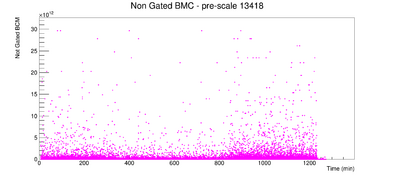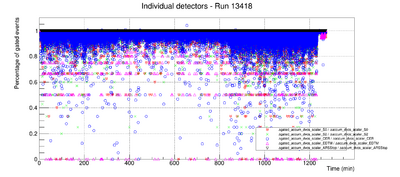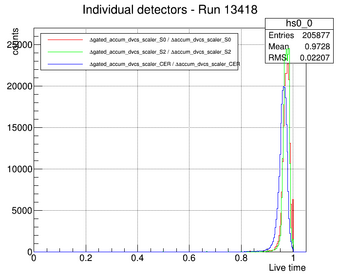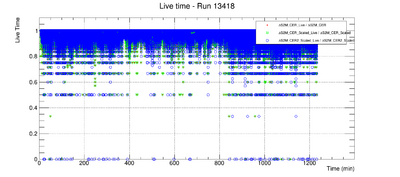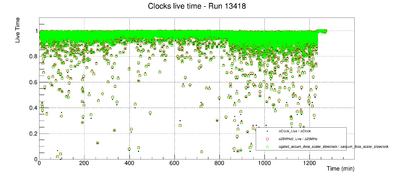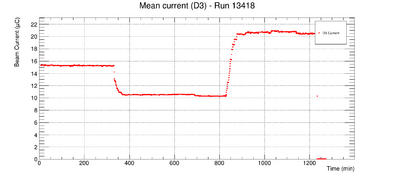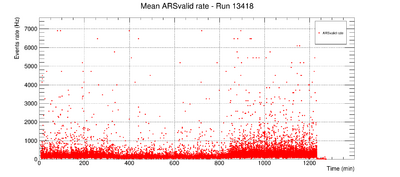Difference between revisions of "MainPage:Nuclear:DVCS-3"
Jump to navigation
Jump to search
| Line 19: | Line 19: | ||
There are three detectors that work within the HRS (High Resolution Spectrometer): the S0, S2, and the Cherenkov Detector. | There are three detectors that work within the HRS (High Resolution Spectrometer): the S0, S2, and the Cherenkov Detector. | ||
===Definitions=== | ===Definitions=== | ||
| − | Scalars | + | ; Scalars : each detector has two types of scalars, internal and external. |
| − | Beam Current Monitor (BCM) - | + | : A list of external scalars |
| − | Beam Position Monitor (BPM) - | + | ; Beam Current Monitor (BCM) - |
| + | ; Beam Position Monitor (BPM) - | ||
===Plots from run 13418: dedicated deadtime analysis run=== | ===Plots from run 13418: dedicated deadtime analysis run=== | ||
Revision as of 10:07, 30 June 2017
| ⇐ Back to the Main_Page |
DVCS-3 Updates
- Deadtime analysis in progress: main goals include
- Determine the livetime/deadtime correction factor (LTCF)
- Take a trigger rate/live rate and normalize using the current, adjust to the prescale, and then apply the LTCF.
- To make sure the deadtime is correctly computed, the deadtime, current and prescale factors should be in agreement more than 1%, especially for the range of rates in which the deadtime is linear.
- Currently analyzing run taken in April 2016, 13418 which was a dedicated run for the deadtime analysis, at three different currents (10, 15, 20 uA) using a liquid hydrogen target.
- There are other dedicated deadtime runs taken in February 2016 with a carbon target, 12471 to 12476 at a current of ~5 uA with different prescale factors ( ).
Deadtime Analysis
Brief Overview
DVCS-3 was an experiment that ran from 2015-2016 in Hall A (E12-06-114) is one of the first experiments of the 12 GeV era. The method of DVCS is the cleanest way to access Generalized Parton Distributions (GPDs). The deadtime is defined as the ratio of the number of "live" events going into the electronics or computers to the total number of events. The deadtime calculations are crucial for the calibration process after the experiment. The electronic and computer deadtime need to be quantified to eventually extract precision measurements of the cross section, and thus obtain the neutral pion form factor.
Detectors in the HRS
There are three detectors that work within the HRS (High Resolution Spectrometer): the S0, S2, and the Cherenkov Detector.
Definitions
- Scalars
- each detector has two types of scalars, internal and external.
- A list of external scalars
- Beam Current Monitor (BCM) -
- Beam Position Monitor (BPM) -
Plots from run 13418: dedicated deadtime analysis run
Important ELog Updates
- Mongi's ELog update: DVCS ELOG LOGIN REQUIRED on May 1, 2017
- Mongi's ELog update: DVCS ELOG LOGIN REQUIRED on May 21, 2017
